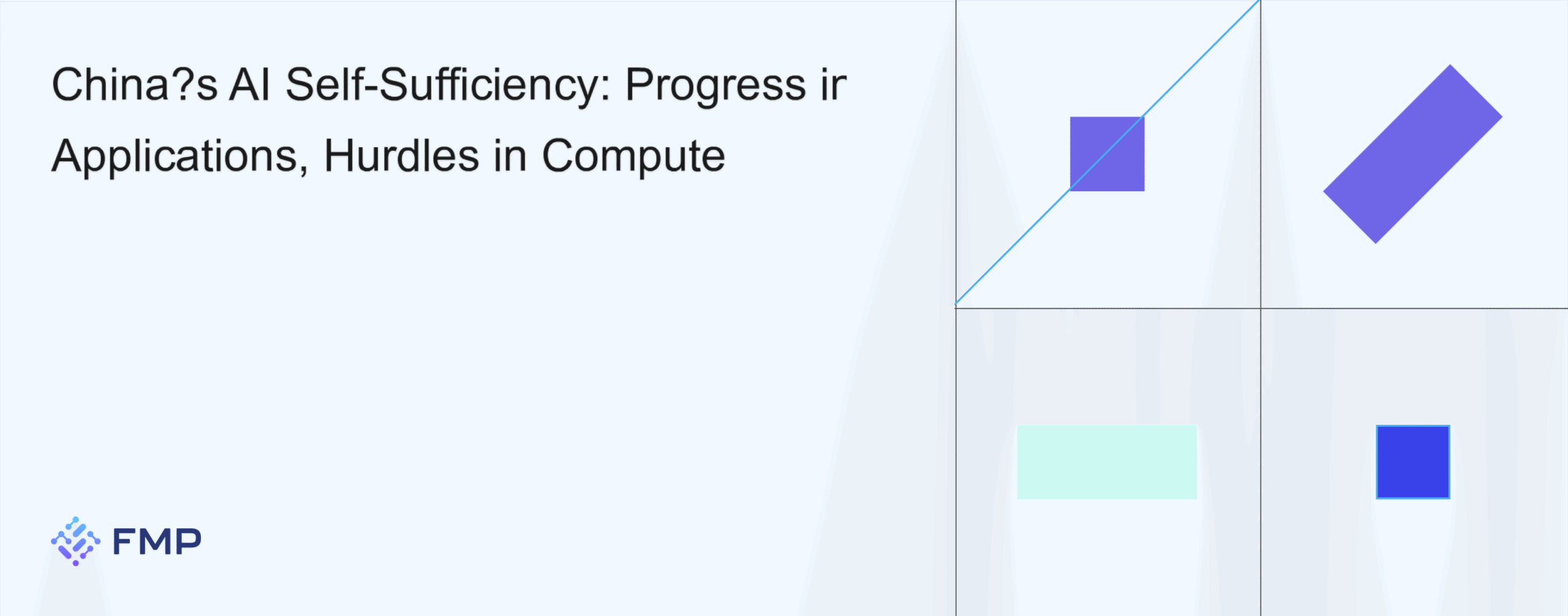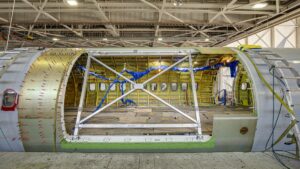UBS analysts map out China’s march toward AI independence—strong in applications and models, yet still reliant on foreign leaders like NVIDIA for high-end compute.
Application & Intelligence Layers: Local Champions
-
Local Platforms & Models: Internet giants (e.g., Baidu, Alibaba) and nimble startups like DeepSeek excel at building chatbots, recommendation engines, and vision systems.
-
Rapid Adoption: China’s vast data pool and uniform language ecosystem accelerate AI applications across e-commerce, finance, and public services.
These layers are now largely self-sufficient, as homegrown models deliver competitive accuracy and customization for local use cases.
Enabling Layer: Semiconductor & Compute Gaps
Semiconductor Self-Sufficiency
-
UBS Forecast: China’s overall chip self-sufficiency will climb to 27% by end-2025 (from mid-teens during the pandemic), spanning DRAM, analog, and equipment.
-
Export Restrictions: Progress continues despite U.S. export controls, driven by state support and domestic investment.
AI Compute: NVIDIA’s Moat
-
Performance Divide: NVIDIA’s GB200 chip delivers ~40 image generations per unit time, versus ~13 for Huawei’s 910C—highlighting a 3× performance gap.
-
Market Share: NVIDIA controls 80%+ of global AI-compute, while Chinese vendors held only one-third of domestic inference hardware in 2024.
UBS expects domestic compute share to rise to 90% by 2029, but warns this push will come with trade-offs—namely weaker pricing power and higher production costs.
Valuation Implications
As China builds its semiconductor ecosystem, investors should watch valuation differentials between Western leaders and emerging Chinese chipmakers. Semiconductor stocks often trade at elevated multiples; you can track this via the Semiconductor Sector P/E Ratios to gauge where Nvidia stands relative to its Chinese peers.
Key Takeaways
-
Applications Are Strong: Local AI services and models are world-class, powering rapid commercial and government deployments.
-
Compute Remains a Bottleneck: High-end inference hardware is dominated by NVIDIA, and bridging the performance gap will take years.
-
Cost vs. Capability Trade-Off: China’s localization drive boosts revenue growth but at the expense of efficiency and global competitiveness in pricing.
By monitoring sector valuation trends and tracking the introduction of new domestic AI-compute chips, investors can assess China’s trajectory toward true AI self-sufficiency—and the investment opportunities and risks that come with it.




